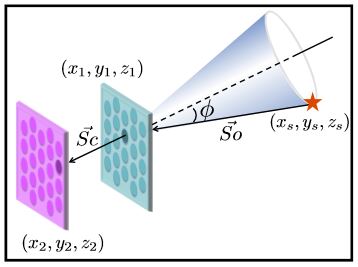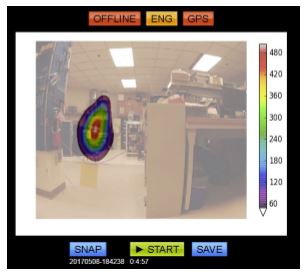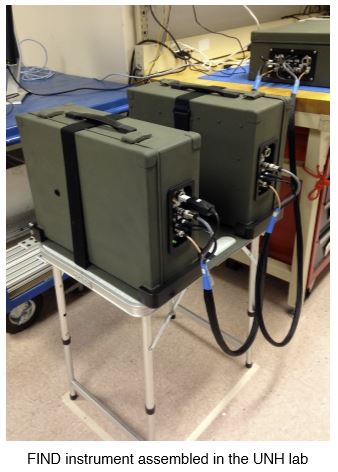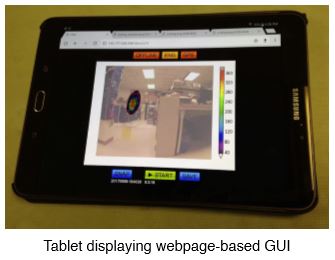
Features:
|
 |
||||||||||||||||||||||||||||||||||||
| The FIND instrument draws on the University of New Hampshire’s decades of experience in MeV neutron and gamma-ray detection, spectroscopy, and imaging. Imaging and spectroscopy are achieved using the double scatter technique. A fast neutron or gamma-ray scatters within one detector volume, and subsequently interacts in a second detector volume a short distance away. Straightforward kinematic calculations allow us to compute the scattering angle Φ, and therefore to constrain the incident radiation to a cone. Multiple (> 20) intersecting cones allow FIND to localize sources of MeV neutrons and gamma rays within ±3º. The angular resolution is ~13º. The neutron and gamma-ray images are overlaid on a visual image captured from a co-aligned camera. | |||||||||||||||||||||||||||||||||||||
 |
 |
||||||||||||||||||||||||||||||||||||
FIND uses modern organic scintillators and silicon photomultiplier readouts:
|
|||||||||||||||||||||||||||||||||||||
 
|
About UNHThe University of New Hampshire’s Space Science Center (SSC) has over 50 years’ experience studying MeV neutrons and gamma-rays, including NASA’s OSO-7, SMM, and CGRO missions, and the DTRA-funded NSPECT neutron camera.About SwRI-EOSSwRI-EOS is a department of Southwest Research Institute (SwRI) co-located with SSC on the UNH campus. SwRI is a nonprofit R&D organization with decades of experience in engineering and largescale project management. |
||||||||||||||||||||||||||||||||||||
|
University of New Hampshire • Morse Hall • 8 College Road • Durham, NH 03801 • USA Dr. Peter F. Bloser • peter.bloser@unh.edu • +1 603-862-0289 • http://www.eos.sr.unh.edu Jason Legere • jslegere@unh.edu • +1 603-862-2756 SwRI-EOS • Morse Hall • 8 College Road Durham, NH 03801 • USA Dr. Mark McConnell • mark.mcconnell@swri.org • +1 603-862-2047 • http://swri-eos.sr.unh.edu |

|